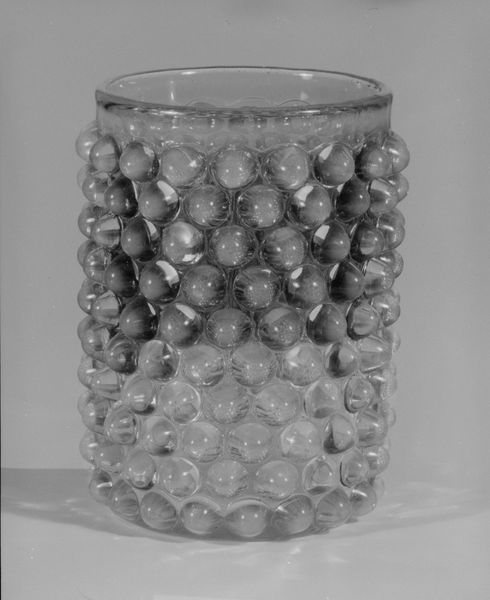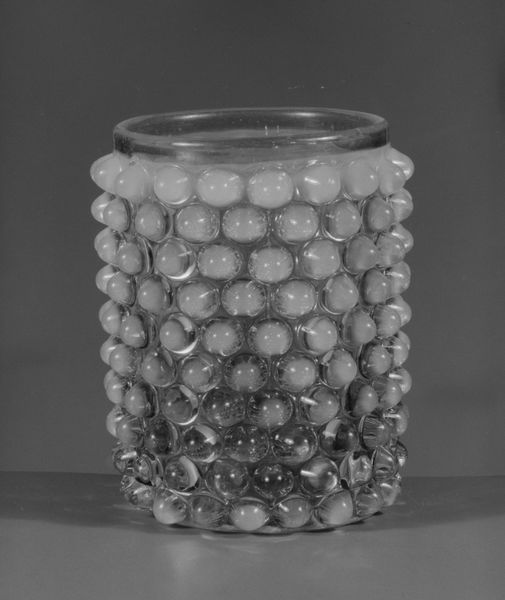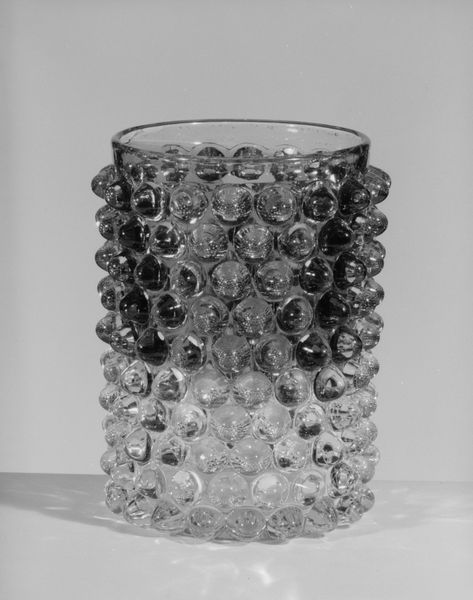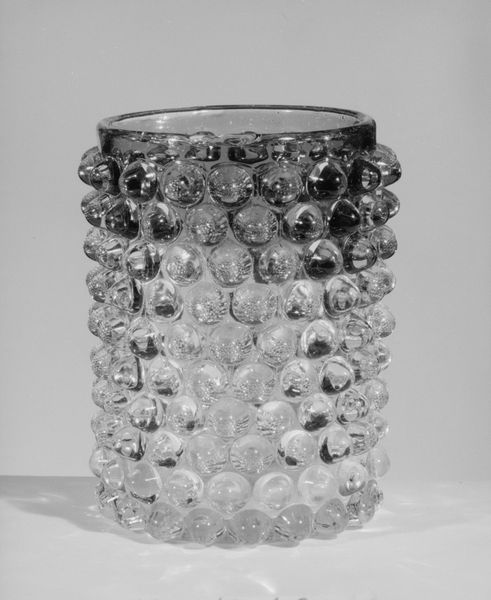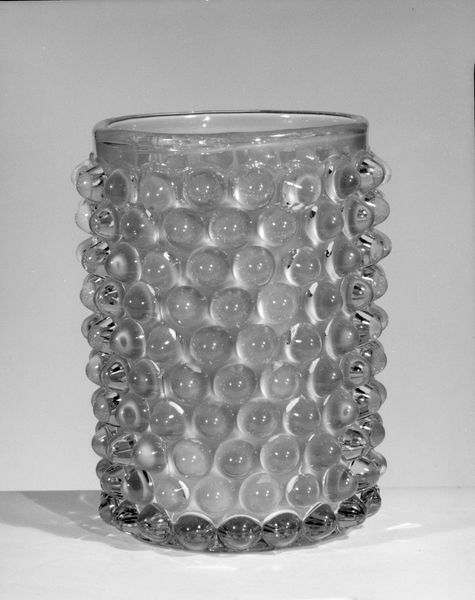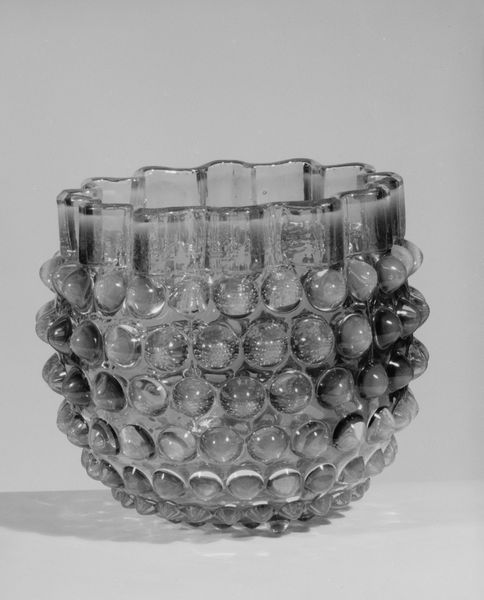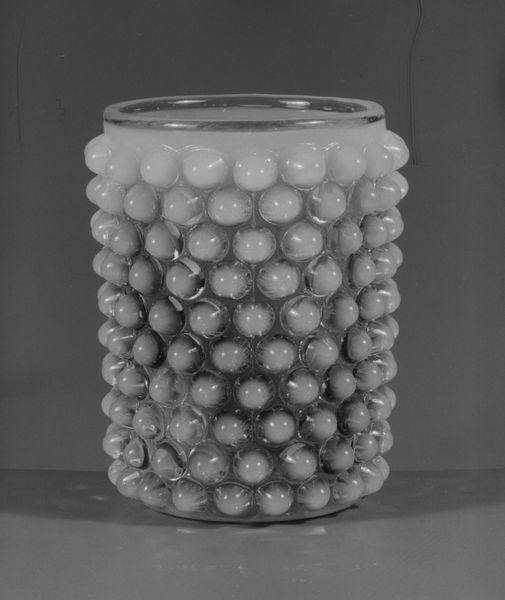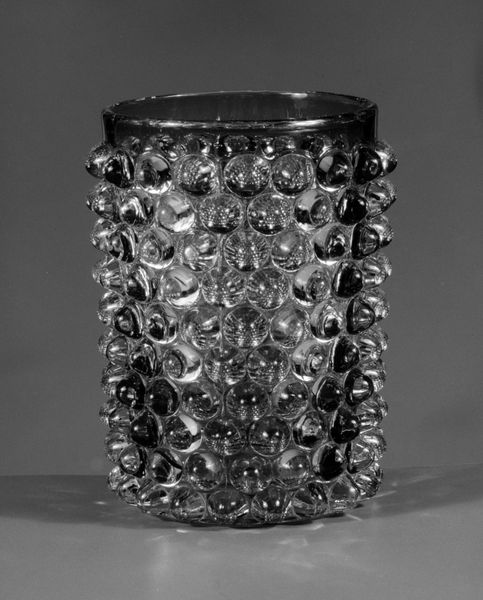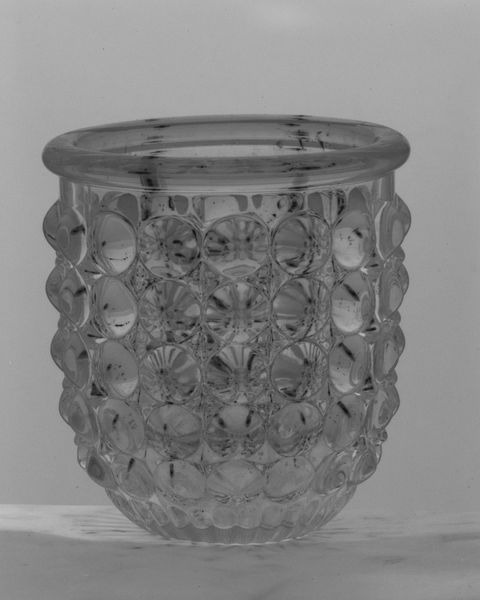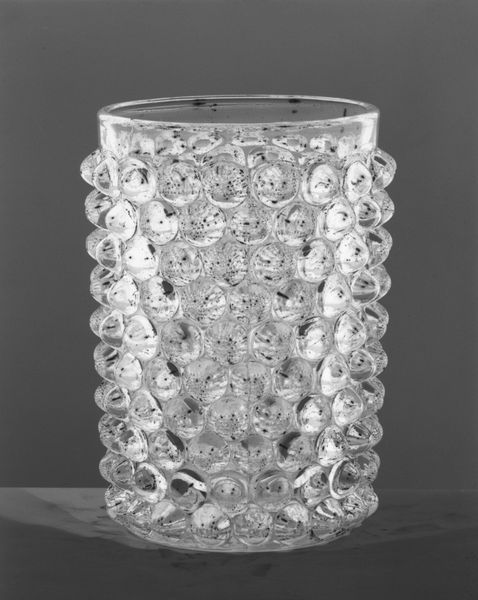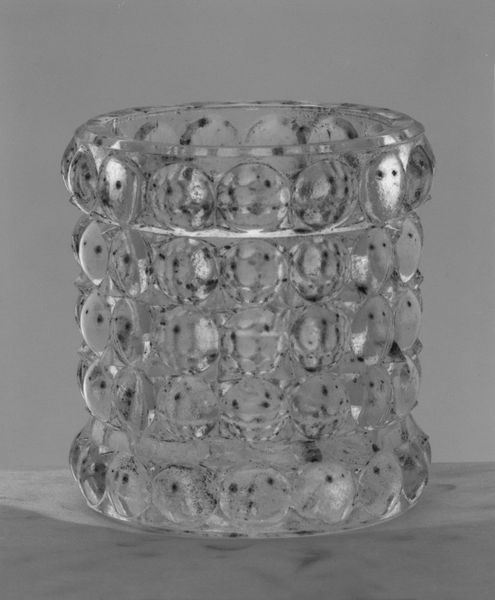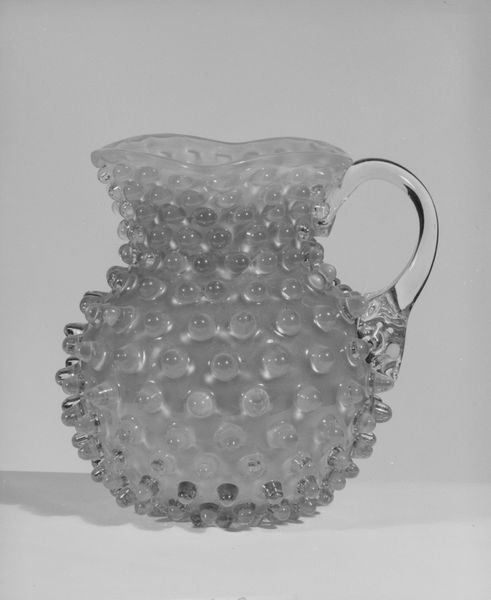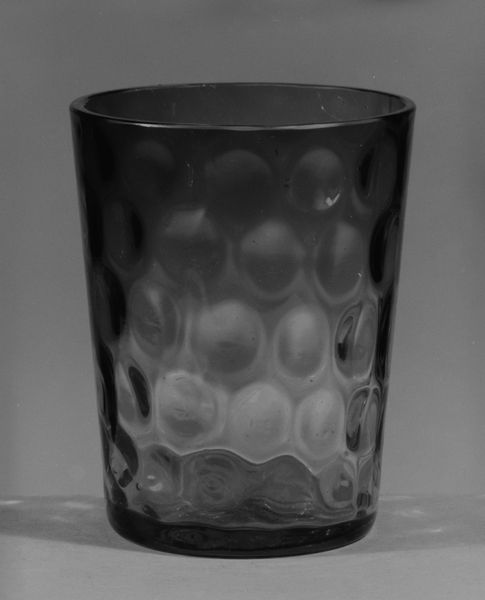
glass, sculpture
#
glass
#
geometric
#
sculpture
#
decorative-art
Dimensions: H. 3 7/8 in. (9.8 cm)
Copyright: Public Domain
Editor: Here we have "Tumbler", a glass sculpture dating from 1887 to 1896 by Hobbs, Brockunier and Company. The overall appearance is dominated by the repeating spherical shapes across the surface. What strikes me is how tactile it looks, like it’s covered in dewdrops. What symbols do you see present in this piece? Curator: The uniform arrangement of spheres immediately triggers ideas of collectivity and accumulation. Each sphere could represent an individual, but together they form a unified whole, almost like a cellular structure. Does that association resonate with you? Editor: I can see that; the individual orbs also look quite fragile. Could the arrangement itself be interpreted as a symbol for social unity, and the need for many independent individuals to form something whole that's stronger than the sum of its parts? Curator: Precisely. This idea echoes the artistic philosophies of the time. Now, think about the medium—glass. What emotional or psychological qualities does glass evoke? Its transparency, fragility... Editor: The tumbler almost suggests that what society values, beauty and utility, may be fragile. This is emphasized with the glass that makes it transparent, honest. The light is definitely an important element here. Curator: You're grasping the layers of meaning inherent in even a functional object. We see not just a drinking vessel, but an artifact laden with ideas about structure, collectivity, and the fragility of beauty itself. This adds depth to what initially appears merely decorative. Editor: Thank you for showing how objects like this speak to cultural values beyond their everyday use. Curator: My pleasure. It is rewarding to connect past sensibilities with present viewpoints.
Comments
No comments
Be the first to comment and join the conversation on the ultimate creative platform.
